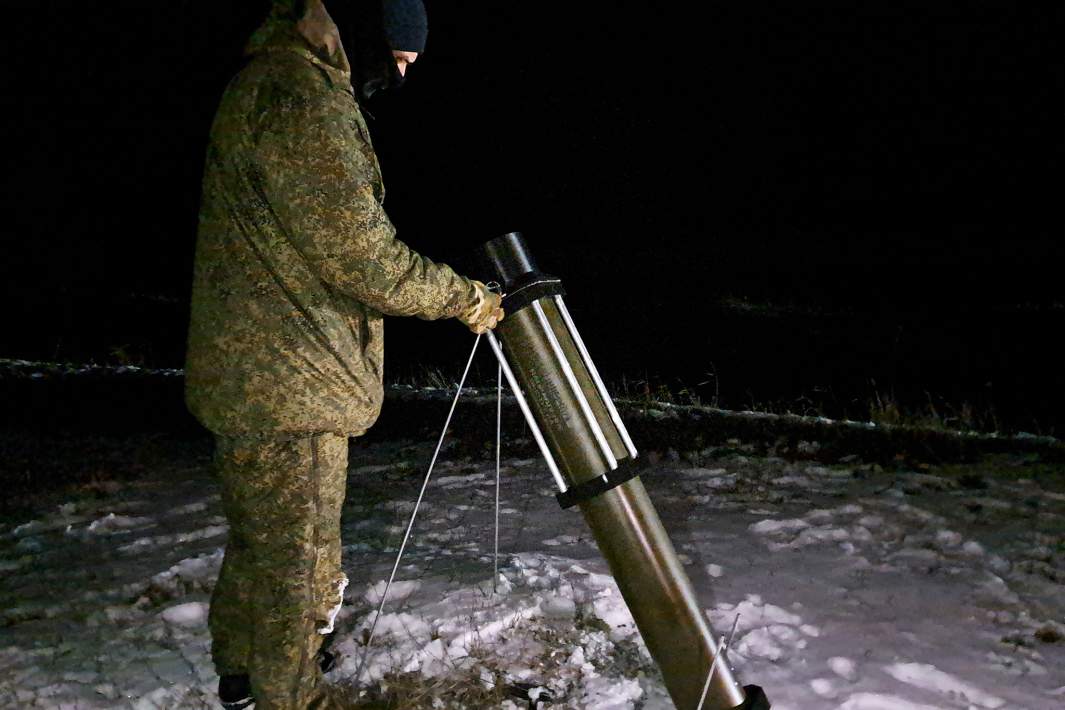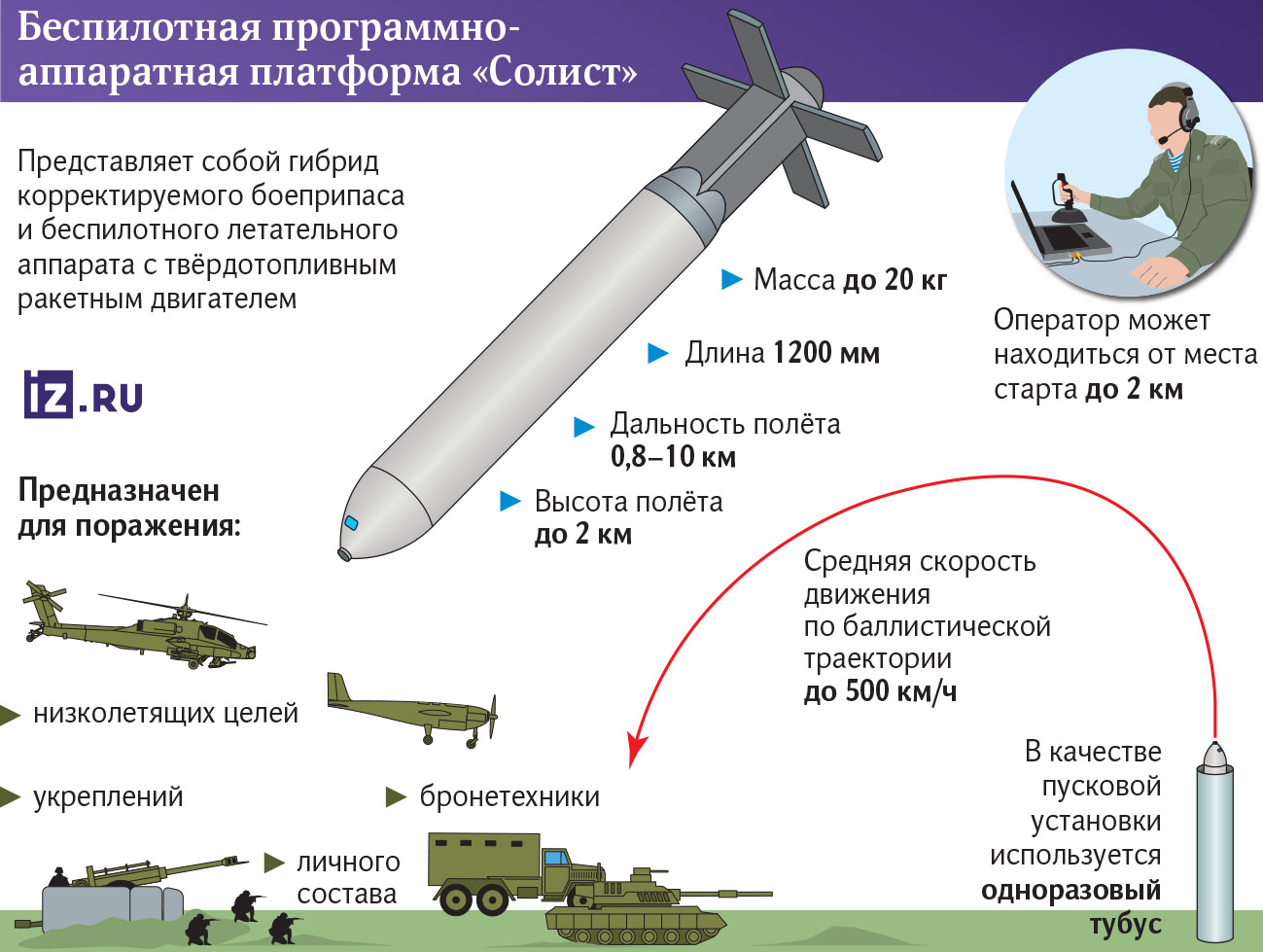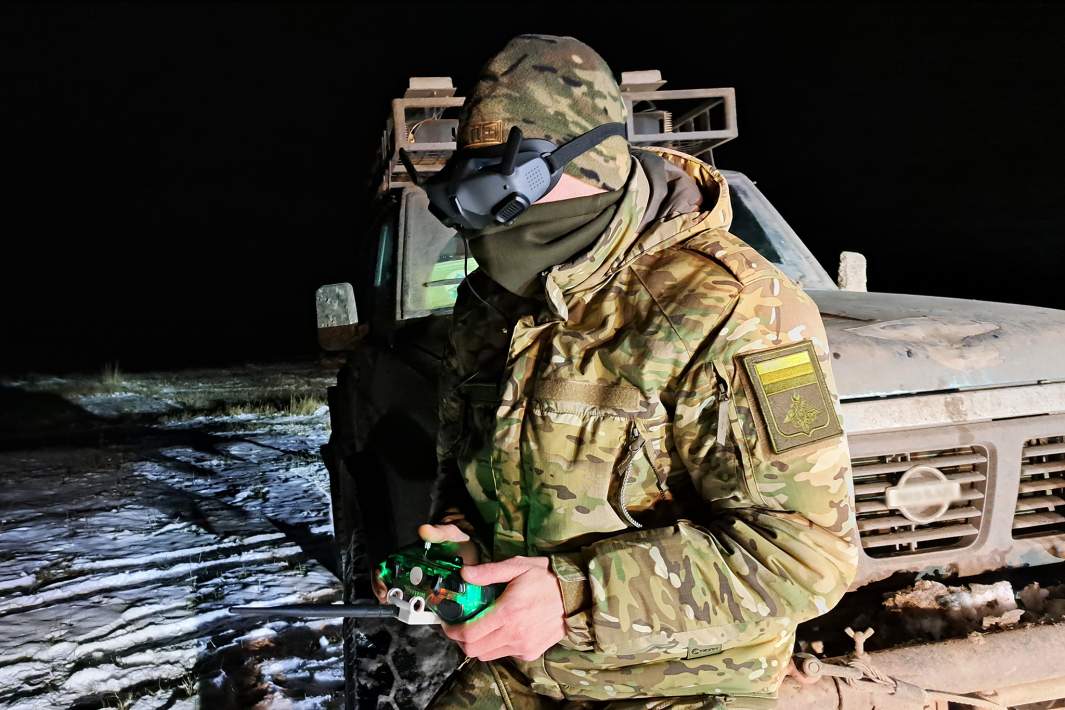Recently, Russian media showcased a public presentation of a new development named "Solist" - a solid-fuel small missile presented as a hybrid of a UAV and precision weaponry. Currently, these are still prototypes undergoing live-fire tests, but Russia has already demonstrated its capability to scale some promising developments quite rapidly.
"Solist" has a claimed length of 1.2 meters and a launch weight of up to 20 kg. After being launched from a transport-launch container in a "mortar-like" manner, the missile ascends to an altitude of up to 2 km, deploys its control aerodynamic surfaces, and the operator begins to steer it, receiving images from the camera. Essentially, this involves television guidance, similar to that used in FPV drones.

The declared warhead of "Solist" is standard for projectiles from RPG-7 and SPG-9 grenade launchers, weighing approximately between 2 to 5 kg. Among the stated targets, there is virtually everything that the imagination of Russian propagandists could come up with, including low-flying aircraft.
In any case, this represents an attempt to create a precision munition for targeting beyond the line of sight - NLOS.

The development is led by "KEMZ" - "Kizlyar Electromechanical Plant", which has a profile quite distant from such types of weaponry, as it primarily focuses on operational control systems for aircraft, particularly in the interests of "Sukhoi", including fighters like the Su-27 and Su-30.
However, it has been stated that the development is being promoted not by "Rostec", which includes "KEMZ", but by the technology incubator ANO "Rivir Center". They boast that "Solist" is of interest to many Russian units and announce its serial production by this summer.

From the perspective of Defense Express, it should be noted that the idea of guiding a missile through a camera is not new. Specifically, this principle is used in Israeli Spike, the latest French Akeron, and Iranian Almas. Moreover, in some Iranian guided missiles for rocket systems, particularly in certain versions of Ababil, which fly over 80 km, a similar guidance method seems to be employed.
Overall, the operator of the "Solist" missile will have approximately 20 seconds while the missile descends from its maximum altitude to guide and maintain it on the desired trajectory. While the effectiveness of the strike will directly depend on the operator's skill, it’s important to consider that "Solist" could integrate solutions with "machine vision," which would mitigate this dependency.